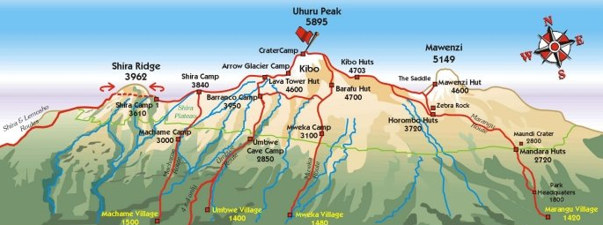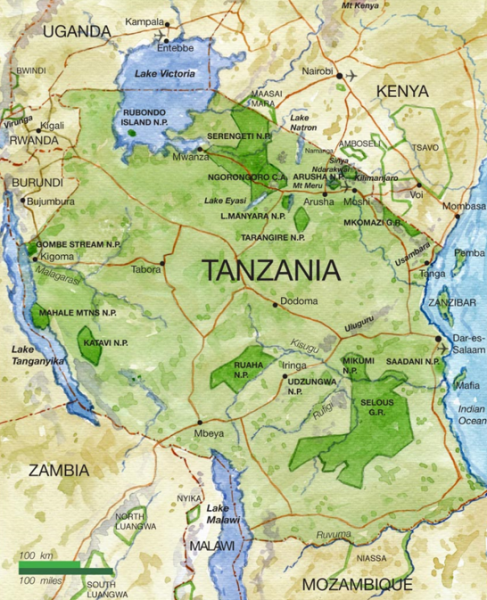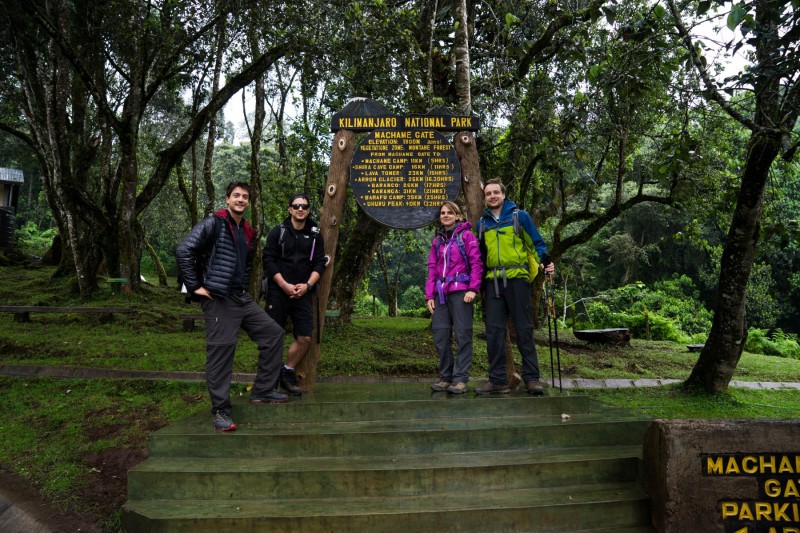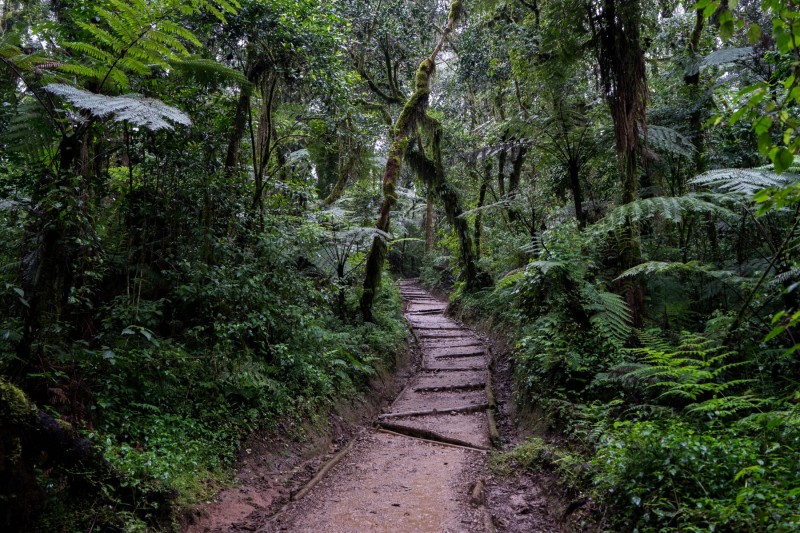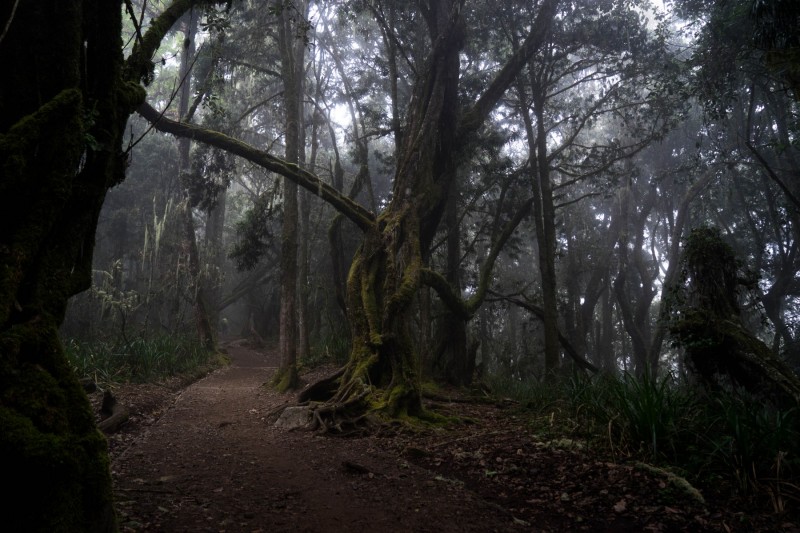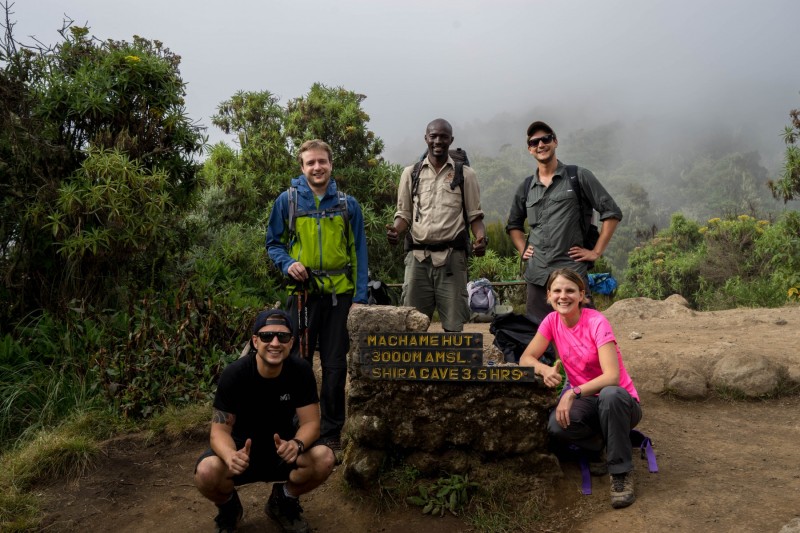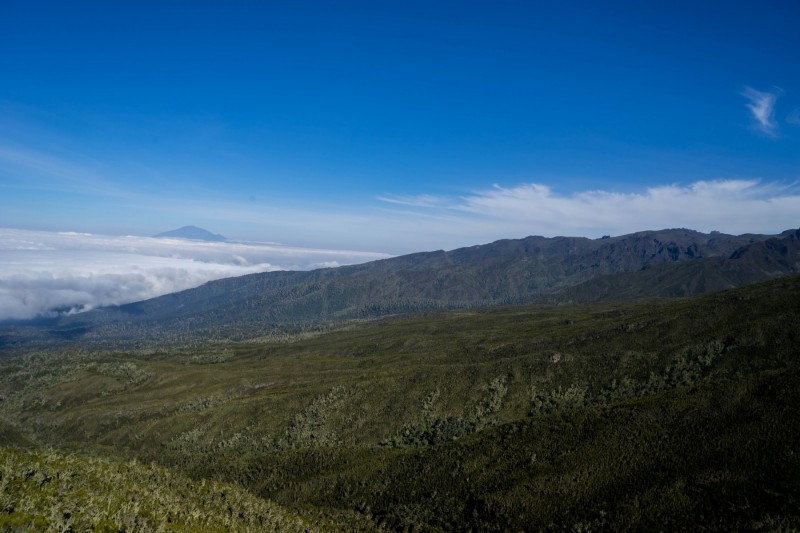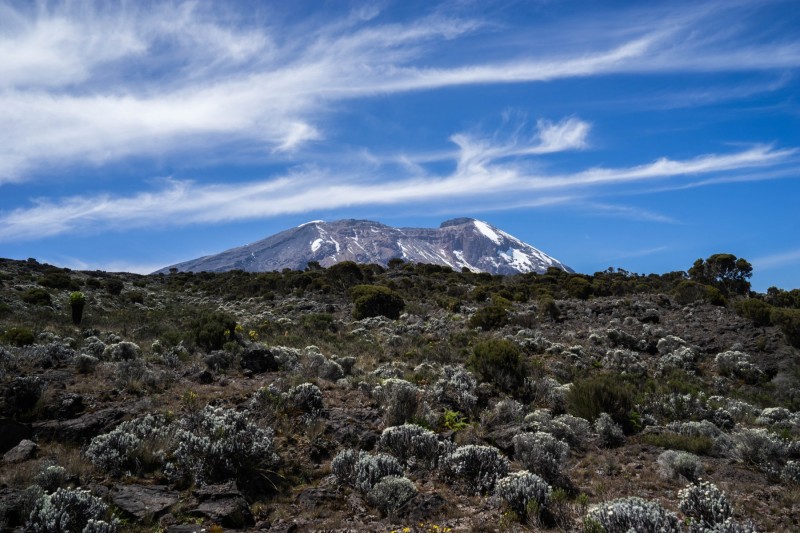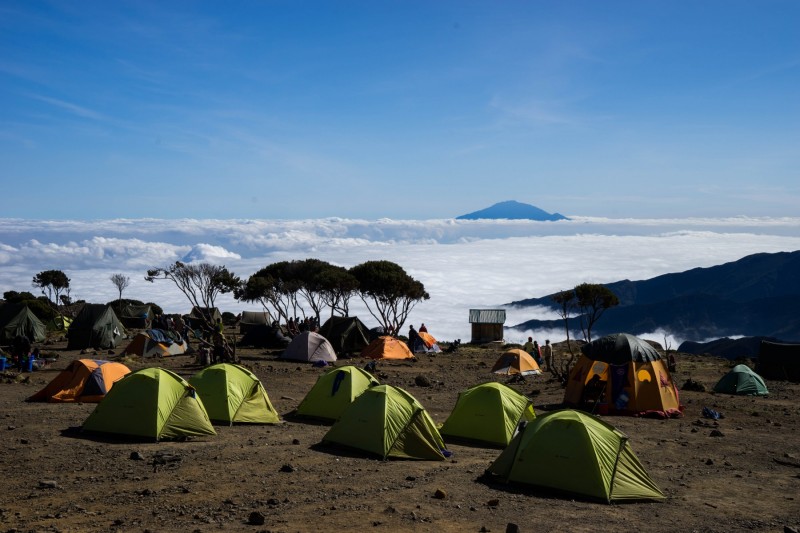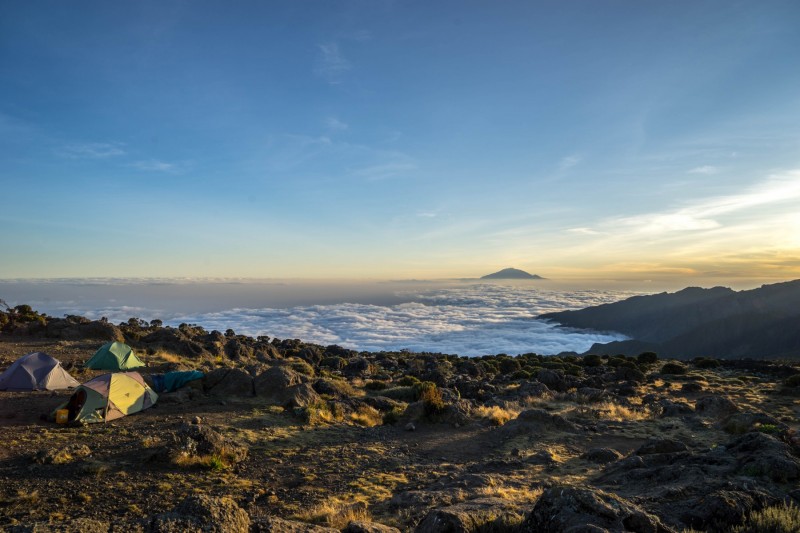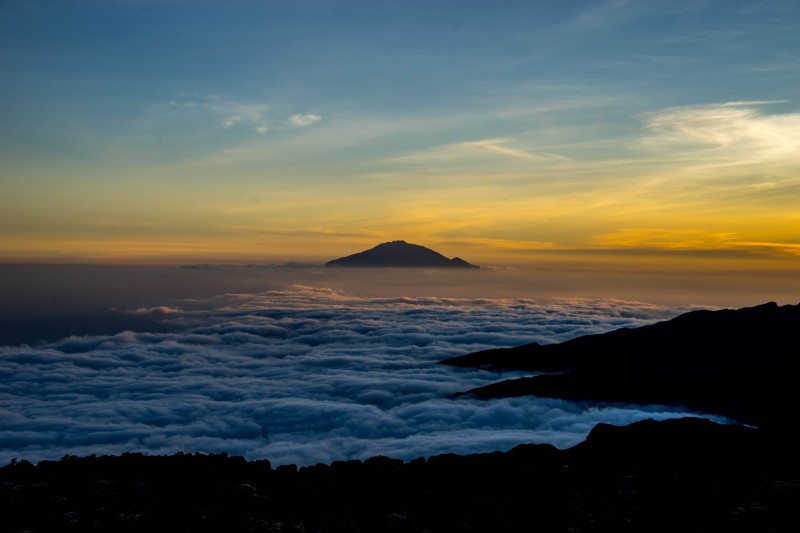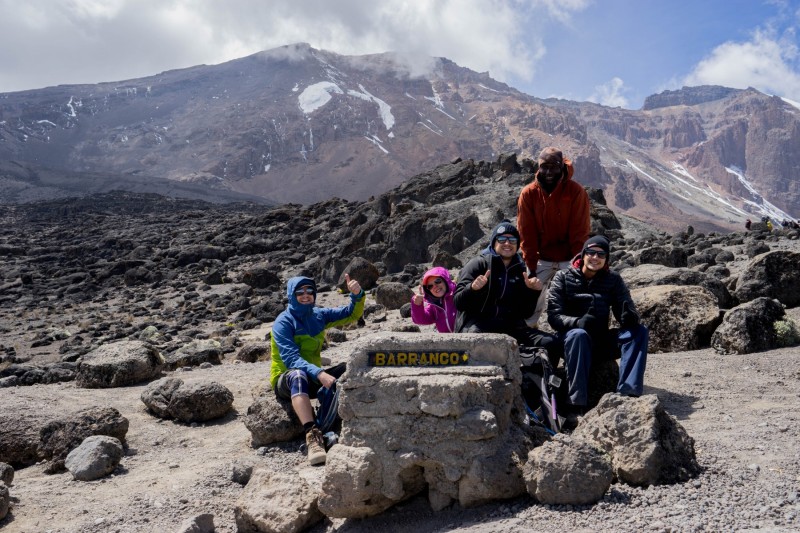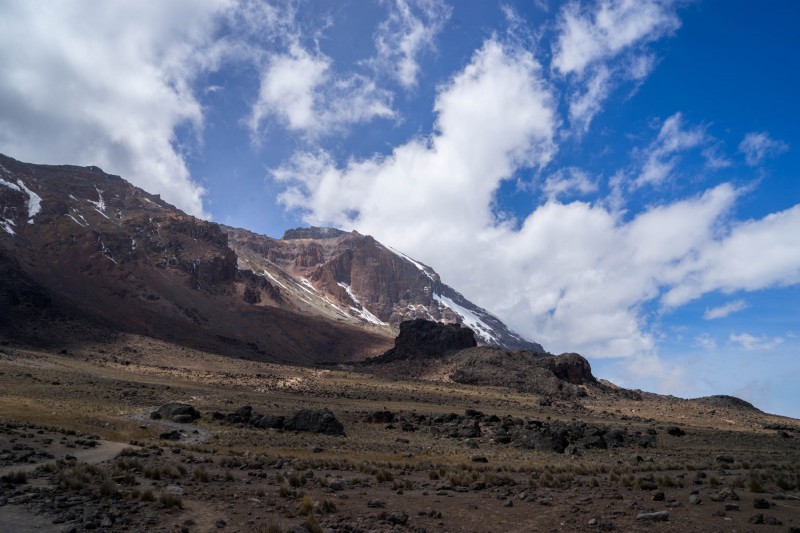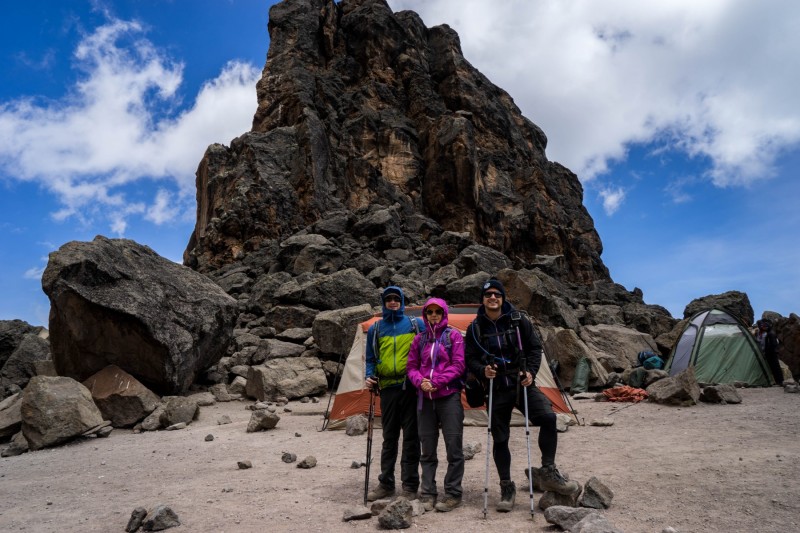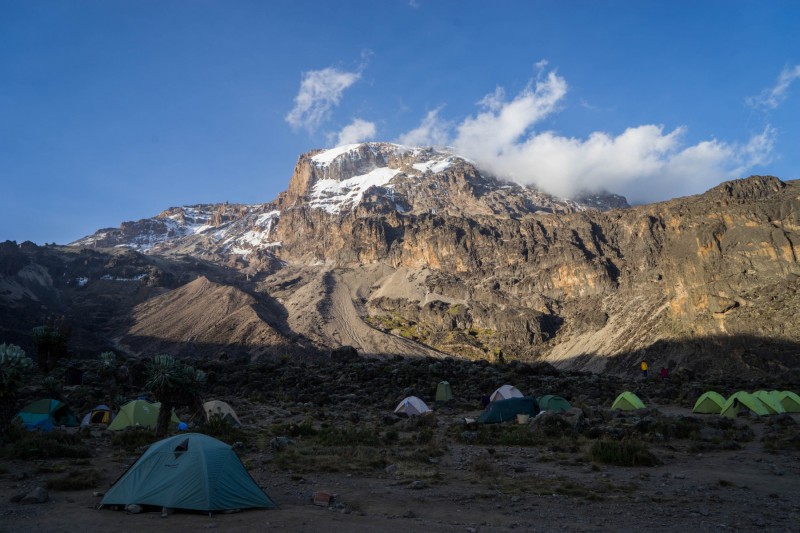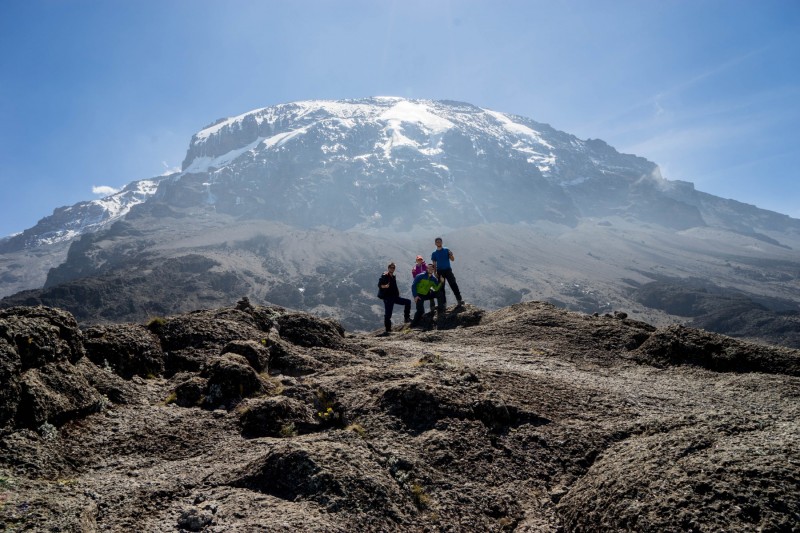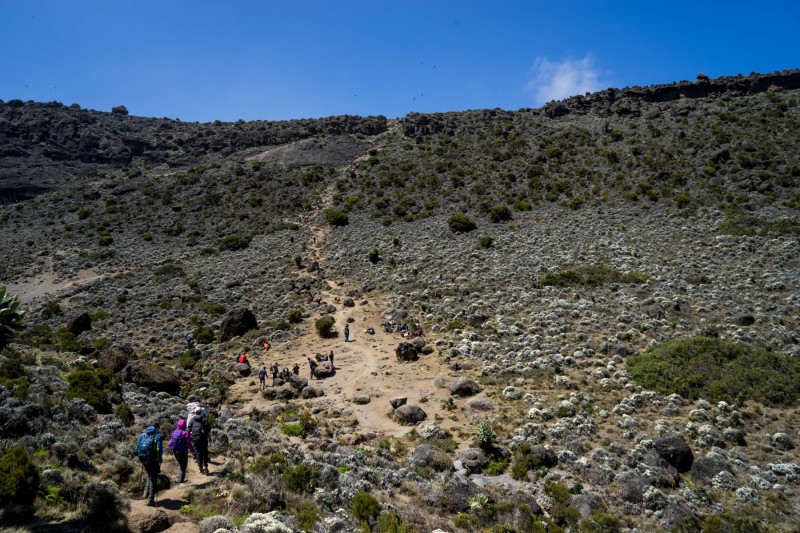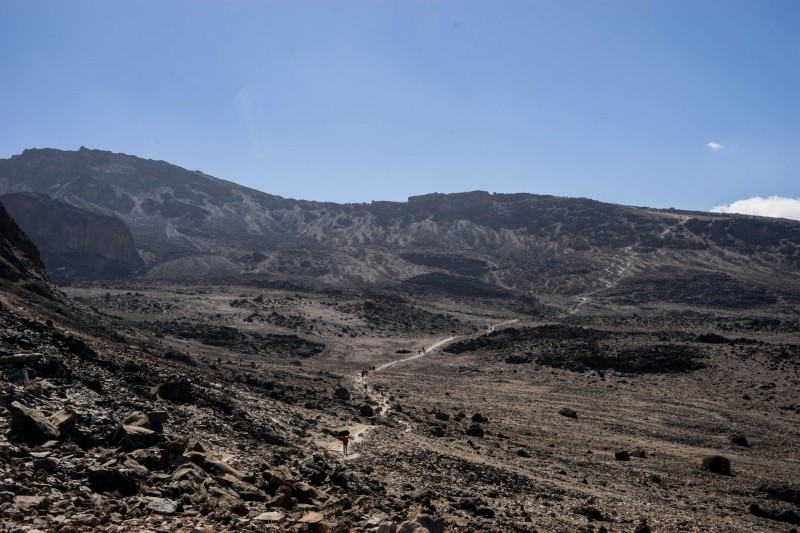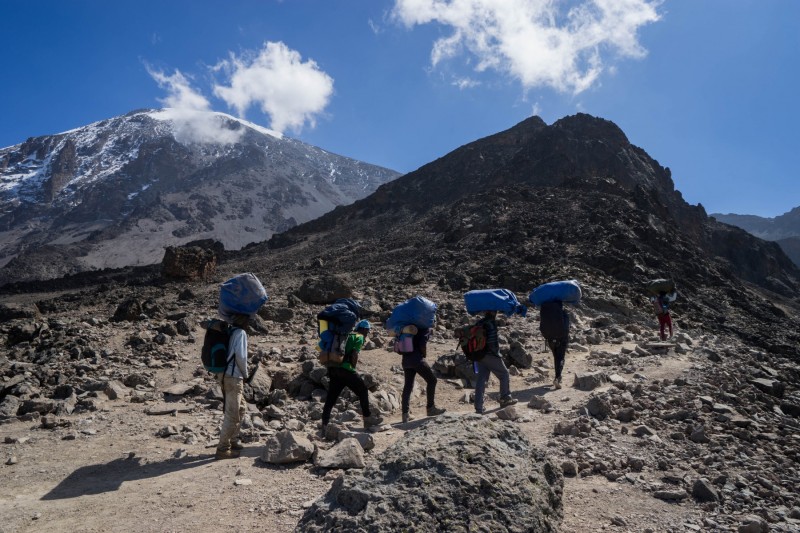In the summer of 2015 we went to Tanzania. Tanzania is a large country, very undeveloped but with some amazing things to see. Such a trip requires some organization in order to optimize the limited time we have there. We have segmented the trip in 3 parts, one week each. The first part of the trip will be the ascent of Kilimanjaro, the roof of Africa with its eternal snows. Followed by a week of safari in the Tanzanian parks:
- Lake Manyara
- The Serengeti
- Ngorongoro Crater
- Tarangire
And finally a week of beach activities in Zanzibar.
We met up at Frankfurt airport for a group departure and after a stopover in Ethiopia where one of us almost got arrested by airport security because of a spoon knife in his bag we finally landed at the Kilimanjaro airport. We collected our luggage (chaotic, the airport is not very well organized) and then we were picked up by the driver of the agency. We organized the trek with CONGEMA Safari. He took us to the hotel in Arusha where we spent the night before leaving for the Trek itself. The hotel (Silver Palm Hotel) is clean but the staff is inefficient, slow, the restaurant is bad with half of the dishes on the menu unavailable. In the afternoon a representative of the agency came with the trek guide to the hotel, inspected our gear (we had received a list from the agency) and presented us the program for the next week, he also explained us the route that we will follow: the Machame way. We spent the evening in front of the hotel on the sidewalk drinking Rum with the Massai guard on duty.
The next morning we meet the entire trek team in front of the hotel:
- The guide
- The apprentice guide
- The cook
- 13 carriers
We all board the small bus, and we leave some of our stuff at the hotel. After a 2 hours drive we arrive at the gate to the Kilimanjaro Park, we have lunch there with a bunch of small monkeys trying to steal our food. Once the administrative matters are settled and all the stuff loaded we pass the access gate and start the ascent! The first day we walk through a lush jungle, with a lot of fog and a very humid atmosphere. The climb is easy, the altitude low and the temperature pleasant. After a few hours we arrive at the first camp where we go to sleep. The porters have already set up the tents, we set up our sleeping bags and we eat our dinner. The food is not great but quite ok considering that we are on a mountain with no shops and no proper kitchen. The night is calm, it is not too cold.
The next day the porters and guides sing the Kilimanjaro song, which is supposed to bring us luck during the climb. We then set off and get out of the jungle and fog, we pass the cloud layer and find ourselves above a sea of clouds with the summit and its snow in sight. Tonight we sleep at more than 3000m, the camp is big, there are many tourists. The sunset is beautiful, the orange colours are reflected on the cloud sea and in the distance we see Mount Meru, the second highest peak in Tanzania. Some of us start to feel the effects of the altitude and have a very bad night. Regularly we see tourists running to the camp’s toilets.
In the morning our friend is even sicker than the day before, to boost him up the cook prepares for him a thermos of ginger tea. It is with a wobbly step that he will follow us during the day. We go up to the Lava Tower at 4400m before going down to Barranco’s camp at 3800. The vegetation has totally disappeared, the ground is rocky, and the panorama is rather gloomy. In order to acclimatize we climb every day to the next camp, then we continue to climb for about half an hour and then we go back down to the camp. Going up and sleeping a little lower allows the body to get used to the altitude more efficiently. It’s starting to get a little cooler. The first day we were in t-shirt and now in fleece.
Breakfast with tea and biscuits, as usual, a little bit of toilet and we “climb” the Barranco Wall, a kind of stone wall. Climbing is a bit exagerated, but the path is still more technical than the last few days. The summit is getting closer and closer, the walk is a bit more difficult. You start to feel the altitude, the average food, the nights in tents on rocky ground, the lack of shower and comfort. The addition of all these factors weakens the body. The camp where we sleep is the last camp before the “Base camp” from where we will do the summit push. We check our gear.
In the early morning we take off to the base camp. The program of the day is busy: climb up to the base camp, eat, sleep until 23:00, get up, have a snack and leave at midnight for the summit in order to summit at around 06 or 07 for the sunrise. The base camp is smaller and much steeper than the previous camps. Finding a spot among the rocks for the tents is complicated, the toilets are getting worse and worse. We are going to take a nap, difficult to sleep in the middle of the afternoon especially with the headache that is getting worse. Night falls and the guide wakes us up around 11pm. A cup of hot tea, some cookies and we put on our warm clothes for the last rush of our adventure on the Kili.
Since we are at more than 5000 meters, and that the ascent is done at night it is rather cold (below 0). So make sure to bring warm socks, warmers, mittens, a hat and suitable clothes! In the dark we start to climb, we don’t see much except the beam of our headlamps, we can see in front and behind the small lights of the other climbers, a procession of small points of light in the dark night. After a few hours the climb becomes difficult, the cold, the altitude and the accumulated fatigue + the nausea of this last day does not play in my favour, but the mind holds. Absolutely out of question to stop before having reached the famous Uhuru peak sign.
When we arrive at Stellar Point, the daylight points the tip of its nose and the ascent becomes much less boring. Between Stellar Point and the summit there is a 40-50 minute walk, with a small pat (Pole Pole as the Tanzanians say, slowly slowly). It is during this walk that we watch the sunrise over the sea of clouds, we start to notice ice, and we cross many walkers who like us visit the highest peak of Africa.
Time to take a picture at the top and we start the descent. 7h to reach the summit, back down to the base camp, 2h, little nap and again wake up and descend to 3000m for the night. 14h of hiking during the day is hard, 14h to go from the snowy summit to the luxuriant jungle of the lower part of the kili. The camp is quickly organized and everyone goes to sleep!
The next morning we organize the “tips” ceremony, in addition to the price paid to the travel agency you owe a tip to the whole team that allowed you to climb to the top. Personally I don’t really like this kind of circus, I would rather pay a fixed rate upfront but hey, it’s tradition. Depending on the rank of the person you will have to give them a certain amount in cash. Guide -> apprentice guide -> cook -> eventual porter who followed you to the top -> porters. You can negotiate with the guide in order to agree on the daily amount to pay, but I warn you, it’s a hell of an amount, around 1000 in ash for 7 days. Think about it before you start climbing.
Following this “ceremony” where your climbing companions will look at you with an imploring look and will react positively or negatively depending on the amount, the camp is folded up and the team goes back down to the entrance gate of the national park where the minibus will pick you up and take you back to the hotel. It is happy but tired and somehow “relieved” that we drop our stuff in our rooms.
After a week of moderate food on the slopes of Kilimanjaro we were looking for a nice restaurant in Arusha. We dined in the evening at the “on sea house” (http://www.onseahouse.com/), a nice surprise. The restaurant is high up and we dine on the terrace, the view is beautiful and the sunset is appreciable. A small guitar concert in the background, western food and good wine, perfect to end our week on the Kili.
Little tips in bulk:
- Take Immodium and meds for headache and nausea.
- Take isostar-type energy drink in tablets+ energy bars for snacking.
- Take clothes adapted to the heat and the cold of the summit.
- Take external batteries for your camera, you will not find any plugs on the way to the summit.
- Do not load yourself unnecessarily, neither in your big bag for the sake of the guy who will carry it nor in your everyday bag, it weighs after a few days.
- Good hiking shoes + sticks.
- Baby wipes to do a minimum of washing on the way.
- I also brought a small fragrant tree for the tent, after a few days walking without washing it starts to get smelly
- Concerning altitude sickness, everyone reacts differently, personally I had no problems before the last 2 days, a friend had problems on days 3 and 4 and some of them didn’t feel anything.
Video of the trip : (Kili 0 -> 1m56)
